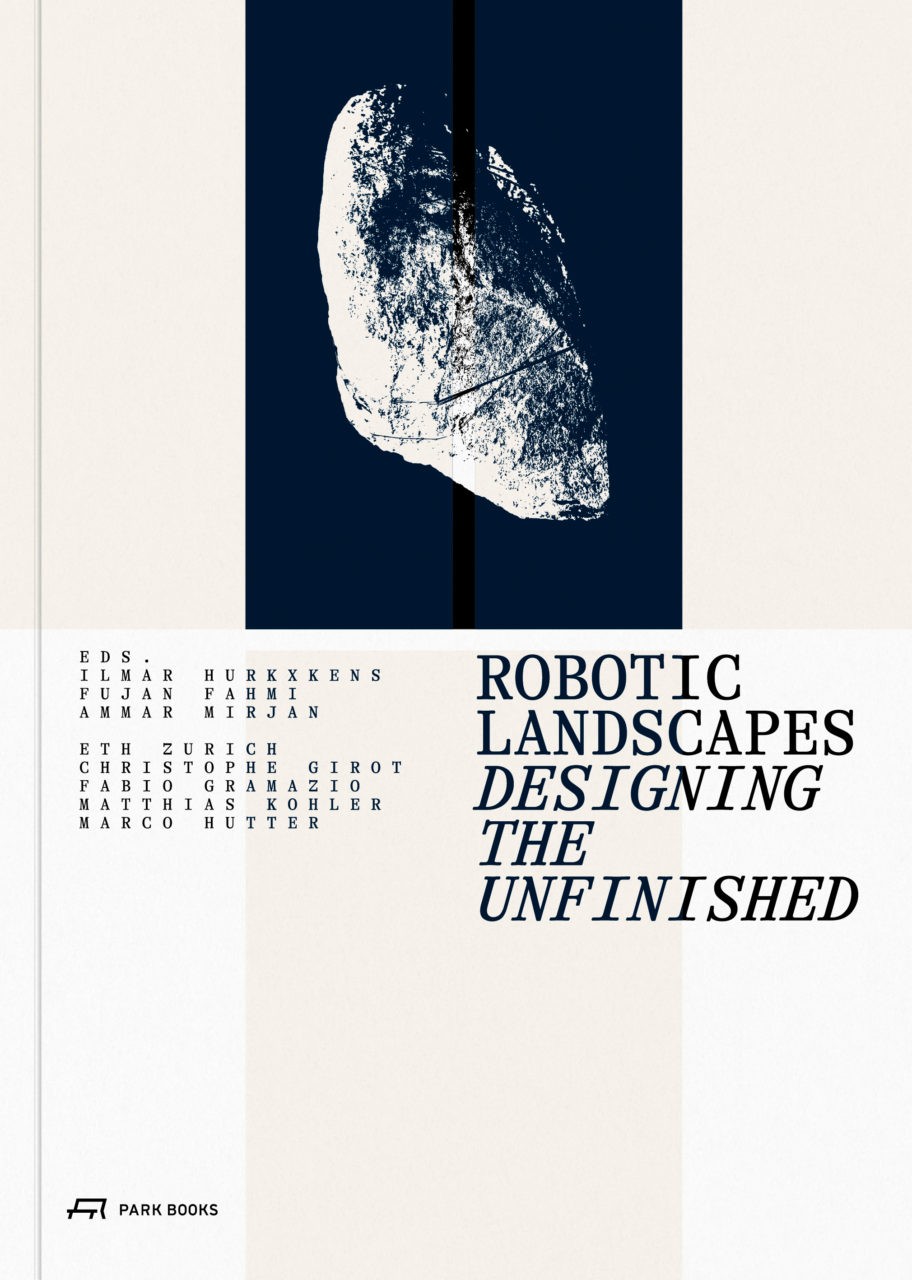
Ilmar Hurkxkens, Fujan Fahmi, Ammar Mirjan (Editors)
2021
Available at Park Books
Robotic earthmoving equipment is dramatically changing the way landscapes can be formed and maintained. Landscapes evolve through constantly changing conditions, and a dynamic response to natural environments can never be considered final.
Autonomous systems can enable this adaptive and continuous transformation of terrain instead of simply creating predefined and static earthworks.
Robotic Landscapes – Designing the Unfinished opens up insights into landscape design’s evolving culture by proposing a new equilibrium between natural and mechanical forces. Reflecting on a series of design research experiments on granular materials at the department of architecture at ETH Zurich, this book is designed to demonstrate the importance of successive design iterations in framing, forming, and finding. Each page reveals computational procedures where functional terrain structures emerge, each capable of sustaining a dynamic landscape that is forever changing.
The Department of Architecture at ETH Zurich has been researching the integration of robots into the architectural practice, both in design and the fabrication process, for some time. This book – created in collaboration with the chair of Christophe Girot, Gramazio Kohler Research, and Marco Hutter at ETH Zurich’s Robotic Systems Lab – is the first to investigate the use of robot-based construction processes for large-scale soil grading in landscape architecture.